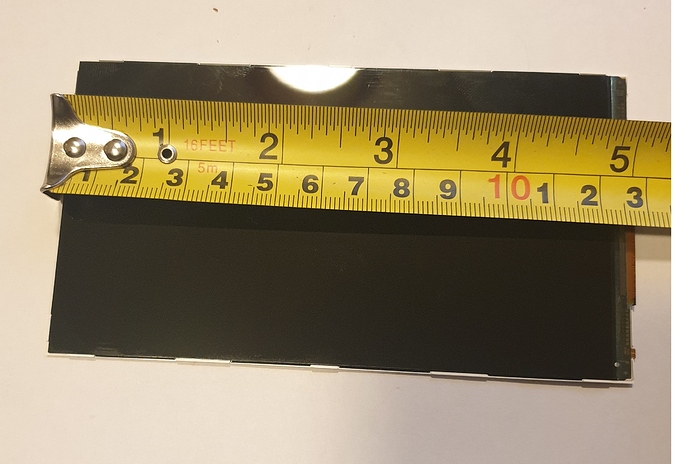i think he should report to support he found a small crack…
A grand Canyon sized crack. Thats those damn Gremlins takin stuff apart again for ya lol.
@Sjef any chance for a lens mod?
So I just learned what I’ve always wanted to know about the pimax 5k+ … panel utilization!
EDIT this turned out to be incorrect (see below). I now estimate utilization to be around 80%
Any way that you could move the panel further back in the case to get better usage?
If you need more magnification, fresnel lens sheet would work to regain focus @Sjef
Well if you’d move the panel closer/further away it becomes of course out of focus
“Bridgechip is agnostic as the same chip is used in both 5k & 8k”
He’s talking about using an oled panel instead of LCD. The controller chip has to be different
The panel controller is part of the display. Tge bridgechip is what the display interfaces to go from mipi to Display port interface.
what kind of lens should that be or where to get that kind of wide fov lens? butcher a star vr one? 
also without access to the distortion profile there is no point trying anything like that
Actually, a quick way for anyone to verify this is just pop out one of the lenses and look through it to a newspaper. Once the lens is at the right distance to the news paper (when it becomes in focus) mark on the paper which part you can see to the left and to the right. This will be about 6.7 cm, while the panel is 12.3 cm long (it’s slightly longer but I’m only measuring the part that can display pixels)
I also just did this for the vive Pro lenses, I can see roughtly 5.9 cm both horizontally and vertically which is about 90%: user login
EDIT some of this post was wrong. See my later comments
programming wise it’s not, each panel model must be configure at startup in the FIRMWARE
Glup : this computation is not 100% accurate don’t forget common stereo view which can be different on both headset… diagonal sub pixelization of the the OLED panels infer also
I’m not sure I’m following you, can you explain your point please?
Private comment updated up to you to correct your post if you wish too ![]()
Just to understand you better then lens it self is about 60mm wide so if you put the lens directly on the news paper you will have a 60mm usage if you get back 12.3mm you only get 7mm more? It’s only the central part of the lens that we use in fact?
This hints at ffr being very important to work flawlessly on any GPU If that much of the panel is not used to save a s.itload of performance. I wonder though how the popping in/out issue occurs if it actually is rendered.
Actually there is already a software mask applied that tells it not to render the unused area.
FFR renders full resolution in the center and then further out less resolution, just like your eyes perceives
StarVR started out as a DIY HMD called infiniteye. They literally stacked 4 fresnel sheets from optolife to use as lenses on the infiniteye prototype.
http://optolife.com/diy_projector_lens/FRL021.html
Palmer Luckey had a prototype with 120 degrees with full overlap, using LEEP optics clones.
You can make those yourself, rather cheaply.
I knew about the mask but was not sure how much of the screen is actually covered. So if it is that tight it masks like 50% Then it would be great for this setting to be adjustable to avoid that pop in/out. Hence disabling hidden mask area is an insane sacrifice in terms of performance wasting ~50% just to avoid pop in/out, when probably a little lower value would fix the issue.

